- News
- Reviews
- Bikes
- Accessories
- Accessories - misc
- Computer mounts
- Bags
- Bar ends
- Bike bags & cases
- Bottle cages
- Bottles
- Cameras
- Car racks
- Child seats
- Computers
- Glasses
- GPS units
- Helmets
- Lights - front
- Lights - rear
- Lights - sets
- Locks
- Mirrors
- Mudguards
- Racks
- Pumps & CO2 inflators
- Puncture kits
- Reflectives
- Smart watches
- Stands and racks
- Trailers
- Clothing
- Components
- Bar tape & grips
- Bottom brackets
- Brake & gear cables
- Brake & STI levers
- Brake pads & spares
- Brakes
- Cassettes & freewheels
- Chains
- Chainsets & chainrings
- Derailleurs - front
- Derailleurs - rear
- Forks
- Gear levers & shifters
- Groupsets
- Handlebars & extensions
- Headsets
- Hubs
- Inner tubes
- Pedals
- Quick releases & skewers
- Saddles
- Seatposts
- Stems
- Wheels
- Tyres
- Health, fitness and nutrition
- Tools and workshop
- Miscellaneous
- Buyers Guides
- Features
- Forum
- Recommends
- Podcast
review
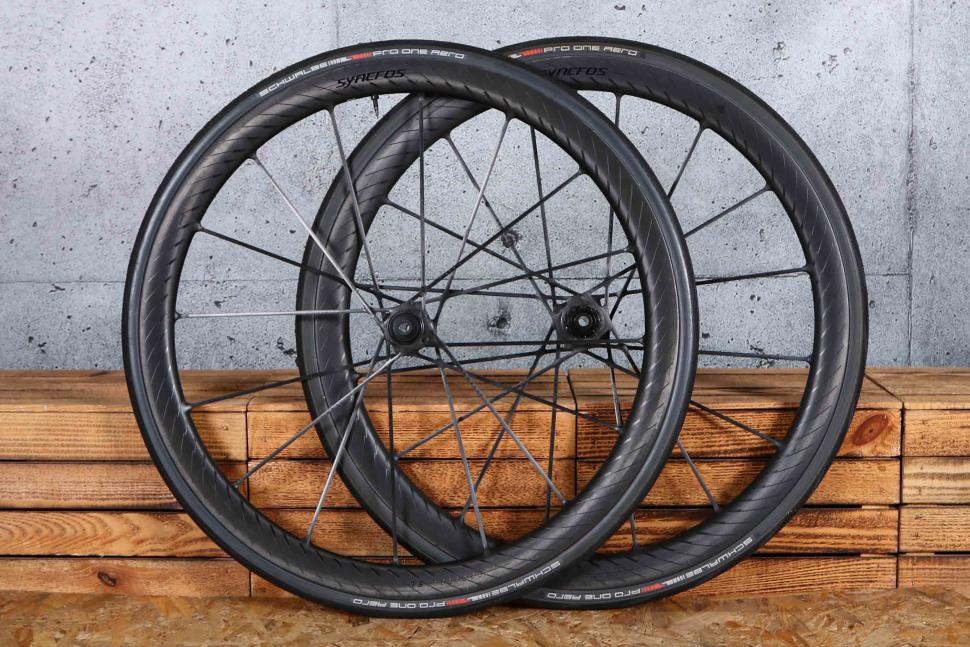 2024 Syncros Capital SL 40 Wheelset.jpg
2024 Syncros Capital SL 40 Wheelset.jpg£4,000.00
VERDICT:
Testament to what is possible when the rule book is torn up
Light
Responsive
Impressive speed
Incredibly expensive
The usual hookless limitations
No ceramic bearings
Weight:
1,202g
Contact:
At road.cc every product is thoroughly tested for as long as it takes to get a proper insight into how well it works. Our reviewers are experienced cyclists that we trust to be objective. While we strive to ensure that opinions expressed are backed up by facts, reviews are by their nature an informed opinion, not a definitive verdict. We don't intentionally try to break anything (except locks) but we do try to look for weak points in any design. The overall score is not just an average of the other scores: it reflects both a product's function and value – with value determined by how a product compares with items of similar spec, quality, and price.
What the road.cc scores meanGood scores are more common than bad, because fortunately good products are more common than bad.
- Exceptional
- Excellent
- Very Good
- Good
- Quite good
- Average
- Not so good
- Poor
- Bad
- Appalling
The Syncros Capital SL wheels have been high up our reviewing wish list for some time, and come with the tagline of 'Ride the future today'. The one-piece carbon construction certainly sets them apart from 'traditional' wheels and if the Capital SLs are anything to go by then the future of road wheels is stable, fast, and insanely light, if rather impractical if you crash, and eye-wateringly expensive.
> Buy now: Syncros Capital SL wheels for £3,514.94 from Lordgun
For slightly more affordable options, check out our guide to the best road bike wheels and the best gravel wheelsets on our sister site off.road.cc.
We've tested all manner of the latest carbon wheelsets here at road.cc, from budget-friendly hoops such as the Velocite Hyperdrive 50s (£699) to bank-breaking beauties such as the Princeton Carbonworks Peak 4550 Evolutions with a staggering price tag of £4,899. Despite their huge variations in price, nearly all of the recent carbon wheels we've tested follow a similar pattern: a wide carbon rim, 20 or so steel spokes and an aluminium hub holding it all together.
The Capital SLs, though, for better or worse, very much go against this trend. Pull them out of the box and you'll be greeted by a one-piece carbon design. Oh yes, the spokes, the rim and even part of the hub is just one piece of carbon fibre.
Syncros says this monocoque design delivers a 'lighter, stronger and more responsive feel that will make you faster on both road and gravel. Faster acceleration, faster cornering, better handling and unreal aero performance is achieved on a wheelset barely tipping the scales'. Just about everywhere then!
I'll start with the easiest claim to verify: the weight. Syncros makes the Capital SL wheels in two variations, the 40mm-deep version that we have here and an Aero model with a deeper, 60mm rim. The 40mm wheelset has a claimed weight of a mere 1,170g, making it one of the lightest wheelsets we've ever tested, and on our Scales of Truth the wheels weren't far off, weighing in at 1,202g with tubeless valves fitted (648g rear, 554g front).
Whichever way you look at it, that's a class-leading weight. Compared to other ~40mm-deep wheelsets we've tested recently, they're only pushed by the more expensive Peak 4550 Evolutions (1,220g). Other premium (£1,500+) 40mm-deep wheelsets such as the DT Swiss ARC 1400 38s (1,360g), Fulcrum Speed 42s (1,420g) and Reserve 4044s (1,435g) give a good indication of just how many grams this futuristic way of creating wheels can save.
Low weight is far from the be-all and end-all, though; in fact, many pro teams and manufacturers are sacrificing weight in the name of aero gains. In truth, the low weight itself is unlikely to make a difference to your performance even on a relatively hilly course – after all, there are far cheaper ways of getting that 150g saving!
The benefit of saving it off your wheels, and in particular near the rims, is a reduction in rotational weight. It's hotly debated whether wheels with lower inertia are measurably faster in the grand scheme of things, but it's undeniable that a light wheelset such as the Capital SL is more responsive to accelerations and FEELS faster.
Out on the road, the wheelset performs just as impressively as it looks. The easiest way to describe it is to imagine how your bike felt when you switched out those floppy stock wheels for a set of carbon wheels... then add another level. My Specialized Tarmac SL7 has never felt tighter or more direct; I hate using wishy-washy words in reviews but I'm struggling to find any other way to put it.
These, as you might expect, feel right at home on an out-of-the-saddle climb or sharp acceleration out of a junction, but how about on the flat? Well, as for the aero performance, road.cc still hasn't bought me a wind tunnel, but on my regular routes these held their own against the best in the business. Many of the wheelsets I've used recently have been 50mm deep but despite a clear correlation between rim depth and aero performance, these didn't clock times any slower.
You can't, of course, tell the aero performance of a wheel just by looking at it but in my mind at least there are clues to back up Syncros' big claims. The hub flanges, for example, are freakishly thin; the spokes are deeper than would be reasonable for any steel spoke; and then there's the fact that there are just 16 of them front and rear, which has surely got to help ward off rotational drag.
The wheels also play nice with wide tyres, as you'd hope for a wheelset that claims to be capable of gravel adventures too. The Capital SLs boast a 23mm internal width at the front, a 25mm inner width at the rear, and 32mm and 33mm external widths respectively. Throughout the testing period I've been using a set of 28mm Schwalbe Pro One Aero tyres although I did also mount a set of Continental GP5000s with little issue.
Hooked or hookless?
One of the recurring topics in our reviews is the hooked vs hookless debate (you can read our feature, What’s the difference between hooked and hookless bike wheels, and which is better for you? for more on this) and it's little surprise that at under 1,200g the Capital SLs belong to the latter category. Make of that what you will, but whichever side of the fence you sit on it's undeniable that there are quite a few red crosses on the tyre compatibility chart and it's impossible to say that's a positive.
The wheels roll on an aluminium hub shell made by DT Swiss, which is kind of shoehorned in between the hub flanges to give the wheels tension. In the rear one, you'll find DT Swiss's latest EXP ratchet system, which we're yet to find fault with, as long as you don't mind plenty of noise.
One curious point is that you won't find ceramic bearings in the hubs. Don't get me wrong, there's nothing wrong with steel bearings, but at this price point you do come to expect the best of the best.
And that brings me to what I see as the biggest negative of the wheels, they're one piece! As you've just read, this has an undeniably impressive effect on the weight, responsiveness and aerodynamics of the wheelset, but this isn't a test lab, these are designed to be used in the real world – a place where accidents happen all too often.
Having abused the wheels for the past few months I am confident in their abilities during 'normal' riding conditions, including gravel; they even have a pretty generous 120kg maximum weight limit. With no spoke nipples or conventional spokes, there's also very little to go wrong – they won't need truing or the spoke nipples replacing, for example. However, would I feel confident racing on a £4,000 pair of wheels which could be written off by a broken spoke? I don't think I would.
Any wheels can get broken, but for me, these take integration too far. I don't see the point in having the fastest wheelset out there if you won't race them in earnest. Even with the tiered crash replacement policy, it's safe to say these will cost an absolute bomb to repair or replace.
Despite looking like they'd rattle you to pieces, the Capital SLs are surprisingly comfortable – the most comfortable carbon-spoked wheelset I've ridden to date, in fact – with each spoke apparently acting like a leaf spring.
Value
There are plenty of positives then, so let's address the elephant in the room – the price. At £4,000 it's impossible to say these are good value, not when there are excellent wheelsets that give away very little in terms of performance for a lot, lot less. Somewhat surprisingly, though, these aren't the most expensive wheels we've ever tested – that title goes to the Princetons mentioned earlier, closely followed by a set of Lightweights.
I'd usually now compare the price of the wheels against some rivals, but the Capital SLs feel like a bit of a unicorn...
Compared with other big-money wheels these more than have the performance to compete, and I do think that they bring something different to the table in a segment full of boring uniformity. As an experiment of what is possible, I think they're an incredible set of wheels and I'm glad to have ridden them, but would I recommend spending your own money on them? In truth, no, I'd tell you to go and get the Syncros Capital 1.0s with replaceable spokes instead.
But do buy them if you want the aero performance of a 50mm wheel, the weight of a 20mm wheel, and the looks of a wheel from 2040.
> Buy now: Syncros Capital SL wheels for £3,514.94 from Lordgun
Verdict
Testament to what is possible when the rule book is torn up
road.cc test report
Make and model: Syncros Capital SL 40 Wheelset
Size tested: 700 C
Tell us what the wheel is for and who it's aimed at. What do the manufacturers say about it? How does that compare to your own feelings about it?
Syncros says: "The one-piece carbon design delivers a lighter, stronger and more responsive feel that will make you faster on both road and gravel." They certainly perform exceptionally well, but they're not without their drawbacks.
Tell us some more about the technical aspects of the wheel?
From Syncros:
Range of use: road and gravel
Material: carbon
Rim: One piece carbon fiber, Hookless, 40mm height, 25mm internal width
Nipples: One piece carbon
Spokes: One piece carbon
25 mm inner width/23mm front
Rear hub: DT Swiss EXP 240 custom, DB, 142mm, 12mm TA, CL, XDR
Accessories: Single wheelbag, Tubeless valve 60mm
Diameter: 700c
Wheel axle: TA
Rate the wheel for quality of construction:
9/10
Rate the wheel for performance:
9/10
Rate the wheel for durability:
7/10
See main review: no issues and a generous weight limit, but if you crash and break a spoke then the whole wheel is written off.
Rate the wheel for weight
9/10
Rate the wheel for value:
5/10
They're not good value but it's easier to see where your money's going than some and the performance is exceptional.
Did the wheels stay true? Any issues with spoke tension?
Perfectly true, spoke tension was good – good job too as there's no way of changing it!
How easy did you find it to fit tyres?
No issues, the tubeless tyres inflated without issue with a track pump.
How did the wheel extras (eg skewers and rim tape) perform?
Ours came with tyres and tubeless valves fitted, no issues.
Tell us how the wheel performed overall when used for its designed purpose
Very well – they're light, spin well, plenty stable enough and surprisingly comfortable.
Tell us what you particularly liked about the wheel
They accelerate phenomenally.
Tell us what you particularly disliked about the wheel
I felt nervous riding them in case I fell off and broke a spoke!
How does the price compare to that of similar products in the market, including ones recently tested on road.cc?
As mentioned in the review, these are some of the most expensive wheels we've ever tested. Compared with the 'similar' Lightweights these actually stack up quite well but they remain an example of paying for diminishing gains.
Did you enjoy using the wheel? 100% yes!
Would you consider buying the wheel? No
Would you recommend the wheel to a friend? No
Use this box to explain your overall score
It's a hard product to score; they're superb wheels with impressively low weight, impressive aerodynamics and a ride experience that is, dare I say, unmatched. Who are they for, though? Who's going to buy a £4k wheelset that is easier to write off than any other? I'm sure there are some people out there who will be happy to take the risk, and if that's you then, overall, they are very good – an 8, that risk tempering a potential 9 – but for most of us they should stay in our dreams.
About the tester
Age: 23
I usually ride: Specialized venge pro 2019 My best bike is:
I've been riding for: Under 5 years I ride: Every day I would class myself as: Expert
I regularly do the following types of riding: road racing, time trialling, cyclo cross, commuting, club rides, sportives, general fitness riding, mtb,
Jamie has been riding bikes since a tender age but really caught the bug for racing and reviewing whilst studying towards a master's in Mechanical engineering at Swansea University. Having graduated, he decided he really quite liked working with bikes and is now a full-time addition to the road.cc team. When not writing about tech news or working on the Youtube channel, you can still find him racing local crits trying to cling on to his cat 2 licence...and missing every break going...
Latest Comments
- brooksby 2 sec ago
When you look at the figures, and add the costs of externalities (which are often just brushed under the carpet) to the motorists themselves, I...
- Hivizalways 24 min 14 sec ago
Live next door to Homer Simpson
- mitsky 25 min 9 sec ago
"The 26-year-old from Flintshire in north Wales is among more than 50 drivers in Britain who can legally drive with at least 30 penalty points."...
- Hivizalways 27 min 3 sec ago
Domestic terrorism? You made that up
- chrisonabike 28 min 22 sec ago
Guessing they see a "need" to devote lots of space / money to drivers? And even if they have been told to do some active travel stuff they know...
- chrisonabike 1 hour 8 min ago
Presumably it's in the long tradition of "Authority is oppression. Even for the milder kleptocracies the bigger the state the more of our cash...
- levestane 1 hour 28 min ago
Agreed on the spokes (tension reduction), leaf springs normally work under bending (sometimes cantilever).
- Rendel Harris 1 hour 53 min ago
Not come across those, noted for my next library visit! The other thing that particular sign always makes me think of is the incomparable Tom Waits...
- chrisonabike 2 hours 26 min ago
I do have some sympathy with "someone gave humans a powered vehicle that could go faster than 5mph, what do you think will happen?" But I'm gonna...
- chrisonabike 2 hours 33 min ago
She had one for that also - apparently because there is often a delay (maybe 2 week deadline on NIP) before the law gets in touch with you, AND you...









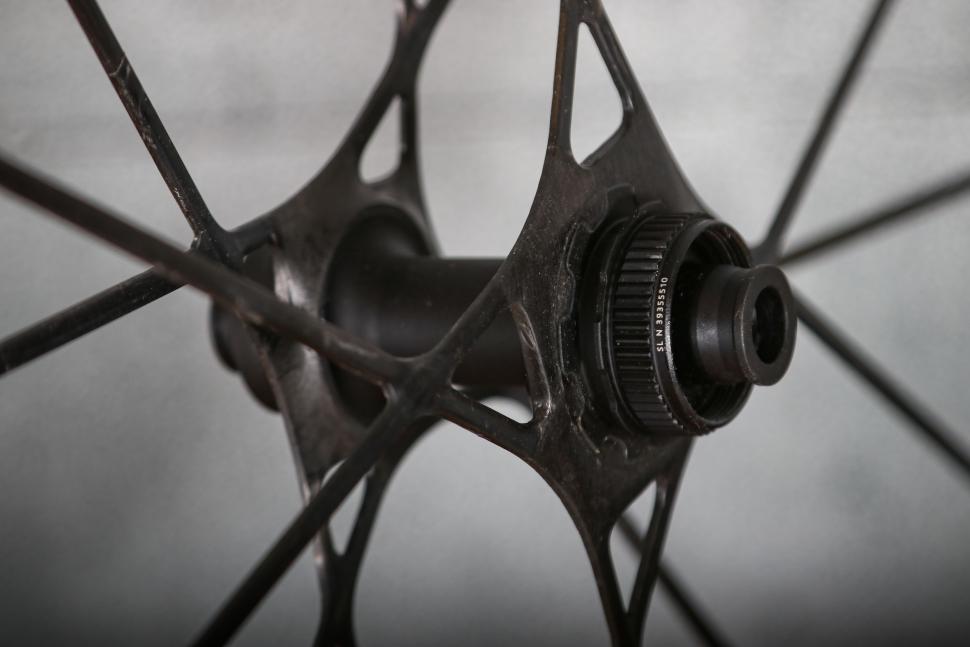
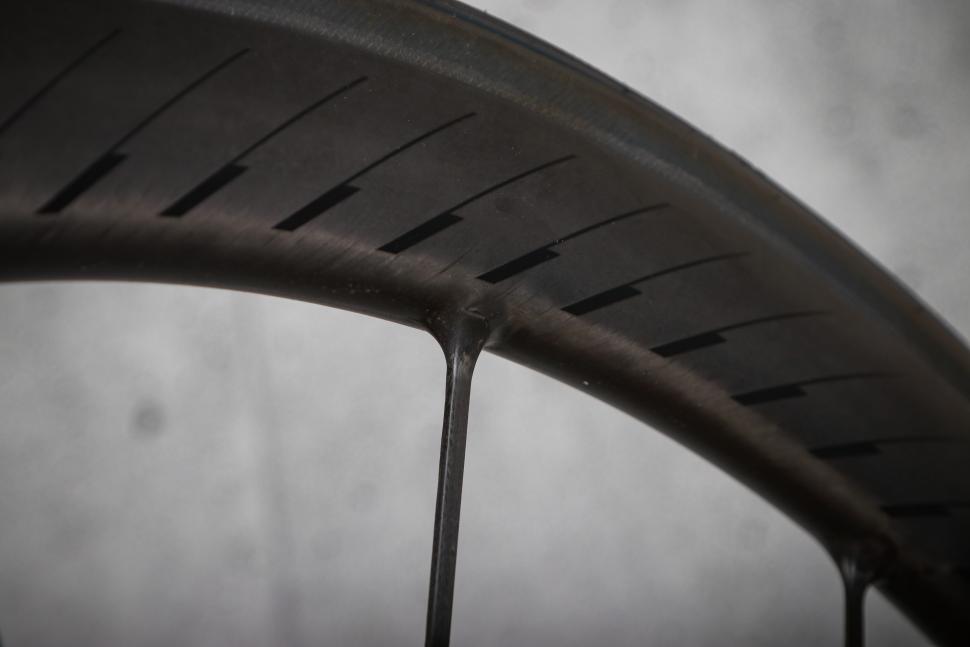
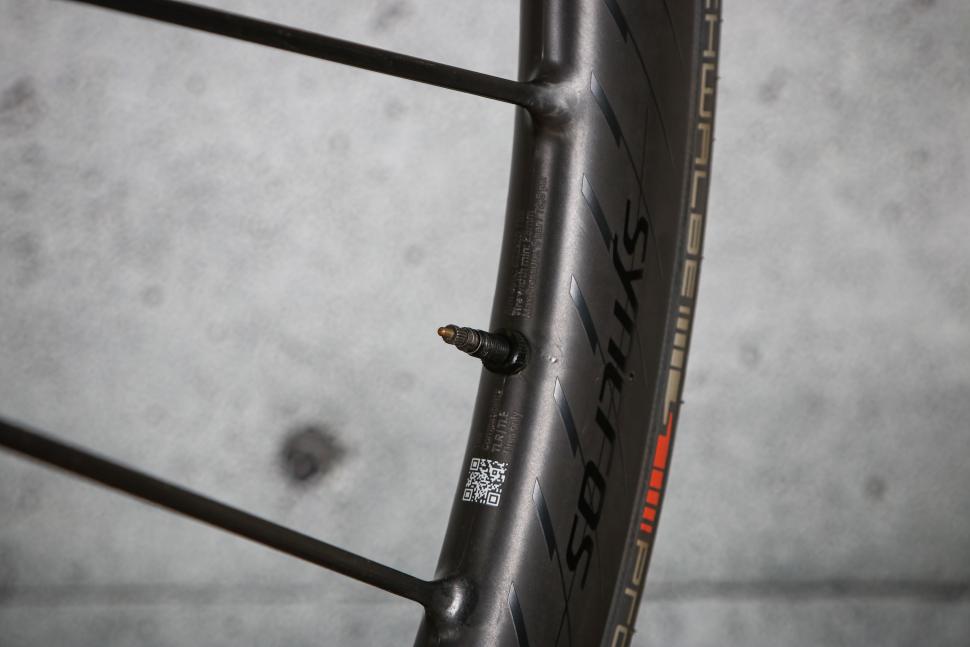
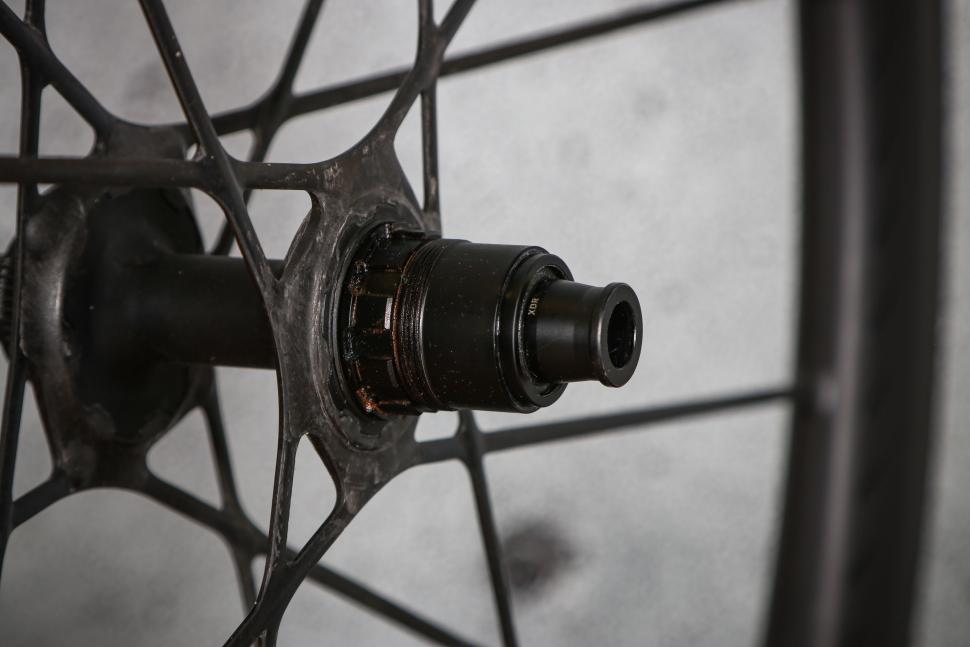
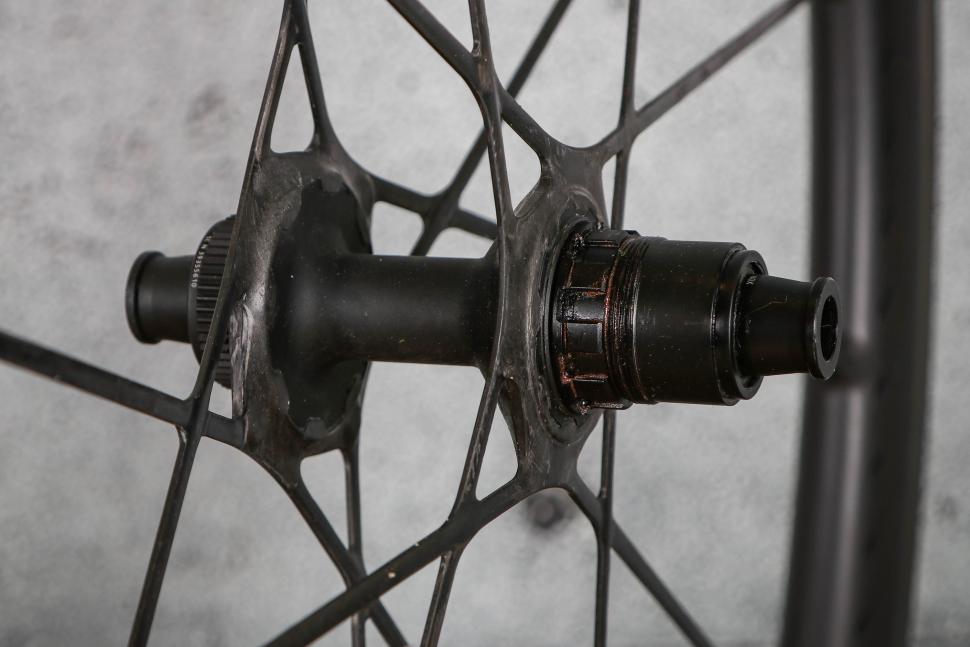
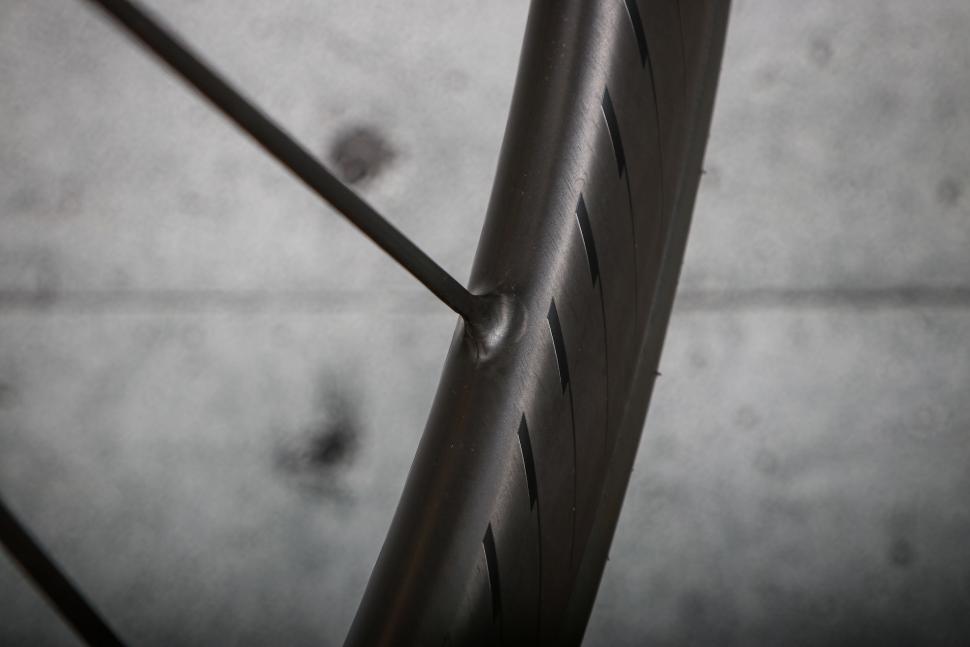

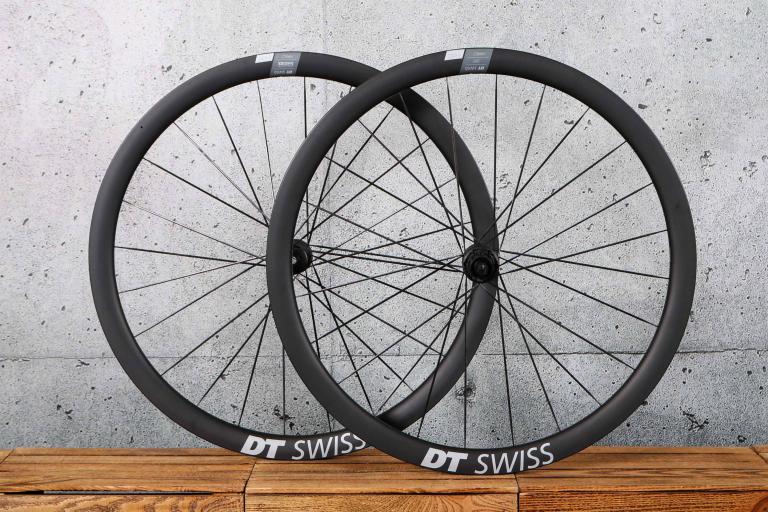
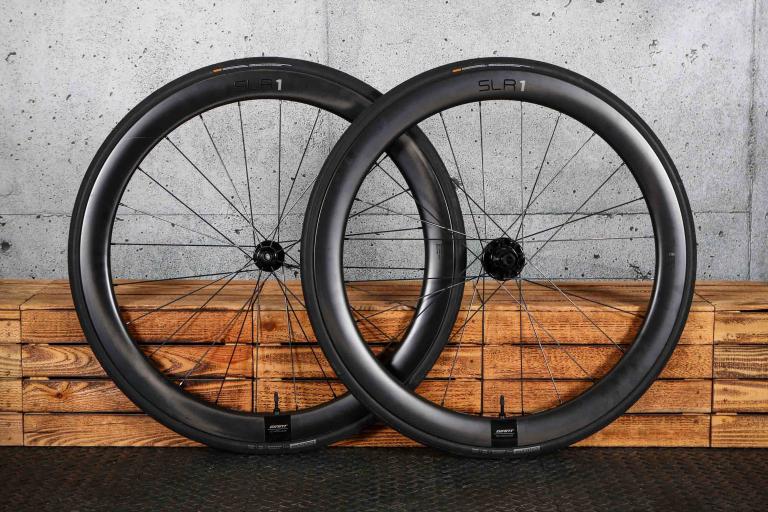
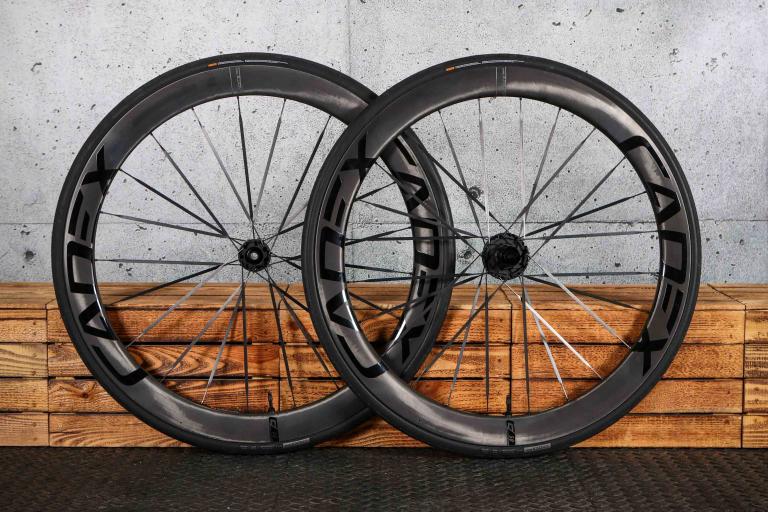
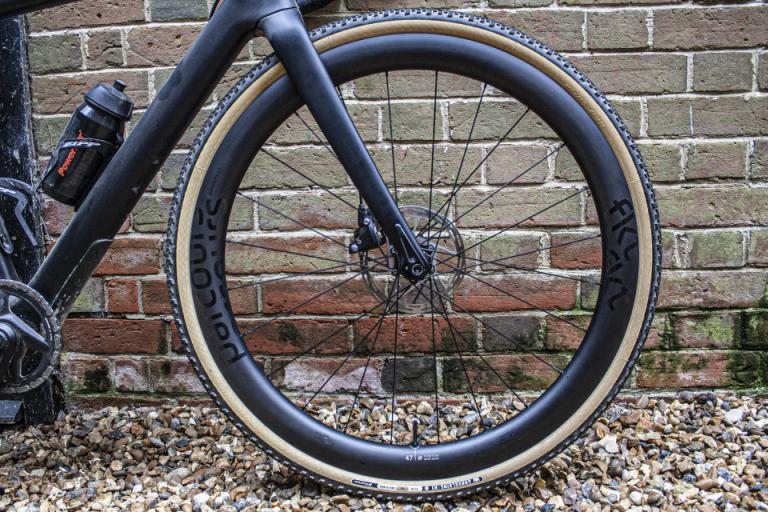
Add new comment
14 comments
If I sell my Park Tool truing stand I can afford ten percent of one these front wheels. Result!
For £4,000 I'm surprised to see only 4 stars for performance and construction. I'd expect perfection, or close to it.
Out of interest I've never (yet) broken a spoke, though my annual mileage is pretty low.
Am I an outlier?
If I had this sort of money to waste on wheels I'd be tempted... (Not that I actually have any legitimate use for them).
Out of interest I've never (yet) broken a spoke
Many decades ago they used to break all the time, but I haven't broken one for 25 years- even on my present gravel bike. The rims break, but not the spokes
Same. Broke plenty until around 20 years ago. I've smashed a few wheels out of true since, though.
I broke two on the same wheel on a multi day trip from London to Sunderland in 2016 - I think the repair on the first was probably botched hence the second. They are the only broken spokes I have ever suffered. (I bet break one on the commute home tonight.) In a similar vein, I've only ever had a chain break on me once.
I made a forum post on my repeated broken rear spokes on the Trek District I bought new two years ago. That seems to now be sorted after replacing the rear wheel once, then having that replacement rebuilt by hand.
The only other time I've broken spokes was on a 1990s Raleigh hybrid, which was 20 years old when they started to go, and on my Bickerton Portable, which had really bad spoke angles due to the small wheels.
My Hunt wheels in my other forum post cracked around every drive side spoke hole, so the spokes were stronger than the rim.
That seems to now be sorted after replacing the rear wheel once, then having that replacement rebuilt by hand
I think all my wheels now (apart from the original front on the gravel bike, which has unaccountably kept going) are now built by Paul Hewitt at Leyland
I've broken a few over the years, but mainly on factory built wheels. Even managed to break a front wheel spoke just by braking (disk brake obviously). Wheels that I've built myself don't seem to have the same issue though.
When you really don't want to break a spoke.
Sorry, but I'm going to pass on a set of these as I don't like the sound of "each spoke apparently acting like a leaf spring" - I want strong spokes that aren't going to waste energy by moving around and it's surely a myth that spokes provide any meaningful suspension. There's a reason why we don't see wheels like this:
'each spoke' (single) and 'leaf spring' (made of many leaves) seems contradictory.
"Acting like", not necessarily "built like". However, I don't think leaf springs work under tension and instead require compression which isn't how spokes usually work.
Agreed on the spokes (tension reduction), leaf springs normally work under bending (sometimes cantilever).
Pretty cool to be fair. Insane money but pretty cool.